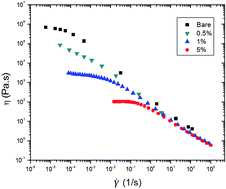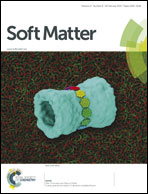Impact of small changes in particle surface chemistry for unentangled polymer nanocomposites
Abstract
We report microstructural and rheological consequences of altering silica particle surface chemistry when the particles are suspended in unentangled polyethylene glycol with a molecular weight of 400. The particle surfaces are altered by reacting them with isobutyltrimethyoxysilane. Levels of silanization are chosen so that the particles remain dispersed in the polymer at all volume fractions studied. Our studies indicate that at the levels studied, silanization does not alter the hydrodynamic thickness of the absorbed polymer layer thickness. Rheological properties are not sensitive to levels of silanization up to particle volume fractions where the average particle separation h ∼ 6Rg (4.8 nm). At these volume fractions, composite microstructure undergoes changes associated with jamming of soft particles (decorrelations in the first peak of the particle structure factor and the onset of a non-diffusive mechanism that dominates particle density fluctuations at short times.) In the region of volume fractions where h/Rg < 6, the zero-shear rate viscosity of the composites is extremely sensitive to level of silanization with a decrease in the zero-shear rate viscosity by four orders of magnitude observed for the highest levels of silanization studied in comparison to the bare particles.


 Please wait while we load your content...
Please wait while we load your content...